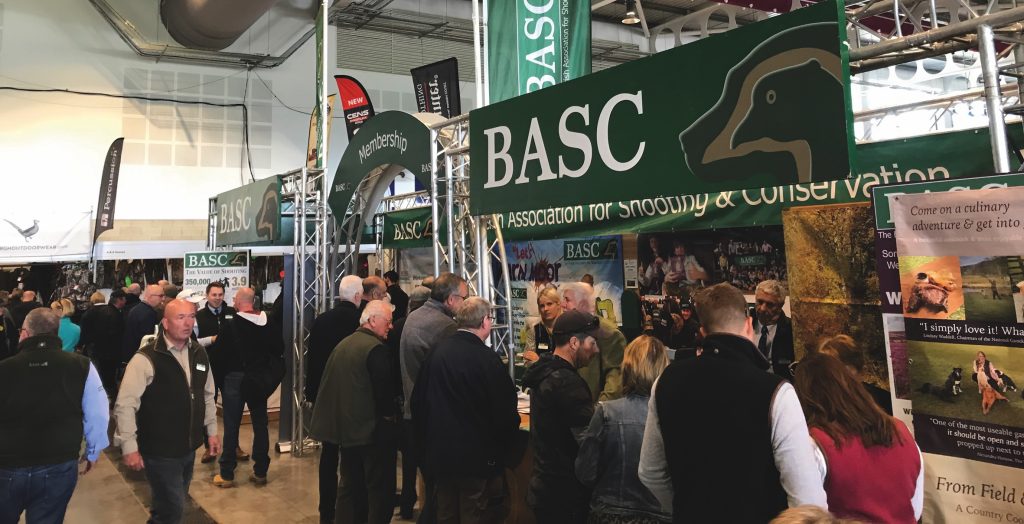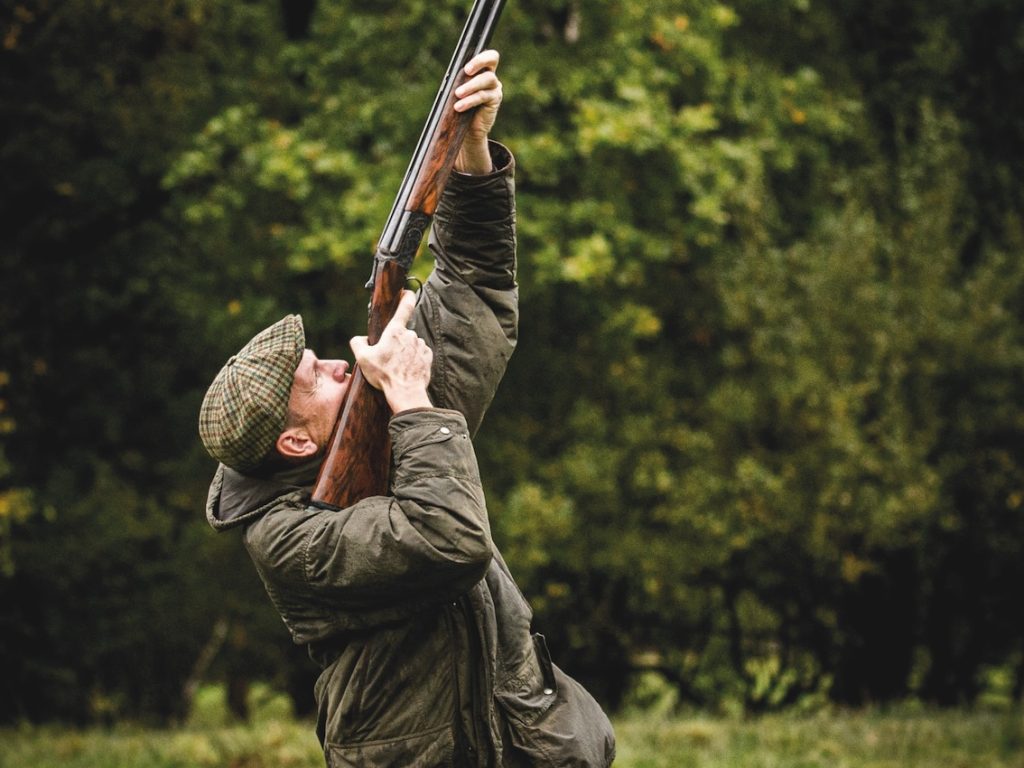Win CENS ProFlex DX5 earplugs worth £1,149 – enter here
Game shooting at Quidenham & Hargham, Norfolk
Game shooting: An example of fine game shooting in Norfolk where Royal connections are found.
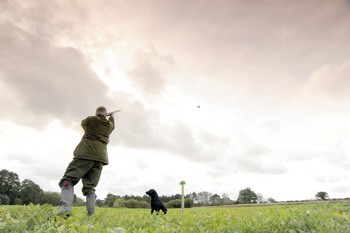
I had left far too early for the journey from Snettisham and drove through dark country lanes for what seemed like days before eventually turning into the yard opposite the green wooden shoot lodge.
There was nobody around, save a gruff, bleary-eyed figure who nodded in my general direction as I took my Wellingtons from the boot.
I was about to ask if I was in the right place when a short, black haired lady wearing a polo shirt popped her head around the lodge door and asked if I wanted something to drink.
After dodging two small boys in rugby shirts scurrying around I spotted Maxinepositioning coffee cups and shortbreads on the counter of a long room dominated by a tablet-shaped meeting table in the centre and a leather-topped desk in the right-hand corner.
Guns slowly began filing in over the next few minutes and, after taking their brews from the counter, began studying the lodge walls.
Pride of place amongst the muntjac antlers and sporting portraits is a black iron plaque bearing the legend: Planted By His Majesty King Edward VII, October 25th 1909.
Edward was a regular sporting visitor to Norfolk and, whenever he was a guest of the Earl and Countess of Albermarle (formerly of nearby Quidenham Hall) he would take the royal train to Eccles railway station.
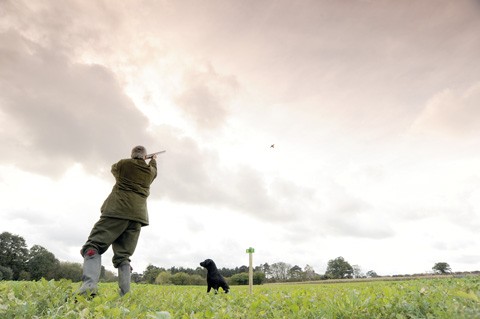
From there he would progress towards the hall, passing along a tree-lined ride that today runs through the Football Field drive.
A stout man in tweeds and shiny brown boots then entered the lodge and introduced himself as Roy Woods, the right-hand man of headkeeper Robert Brown and shoot captain Phillip Milburn.
All three men have led busy lives; Robert has overseen around 1,000 shoot days during his keepering career; Philip, a successful businessman who bought the shoot in 2007, has made learning about shoot management his passion and invested heavily in the shoot’s infrastructure; and Roy was a member of the emergency services in the area for 30 years.
Quidenham & Hargham has certainly benefited in the years since the team came together and conducts itself in a business-like fashion; there are now 85 drives – one for every 100 acres, and these are brought to the attention of the world by an extensive website, which includes the other shoots under the Milburn Game & Shooting umbrella.
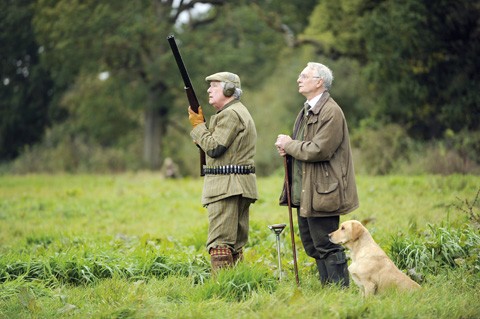
The shoot was even featured in The Times recently after a visit from Claire Zambuni’s Covert Girls syndicate.
After the briefing – guns are live on pegs and cannot shoot ground game – the party climbed up a staircase and into the back of a green army lorry.
It was a snug fit – benches around three sides with two back-to-back in the centre.
A petrol can with the top half removed accommodates spent cartridges and gunslips are stored inside a series of vertical racks.
The low autumn sun had struggled to break through the clouds before our departure but was bright when we disembarked on the edge of Graham’s Maize, a vast tract of fallow ground where guns settled at pegs between a wide wooded area on the left, and mixture of ploughed and stubble fields reaching towards a road on the right.
Guns in the centre of the line faced a narrow block of maize held back by the lengthy remains of a stone wall and string of trees, while those furthest right had a clearer view of flankers and the road carrying cars to and from the A11.
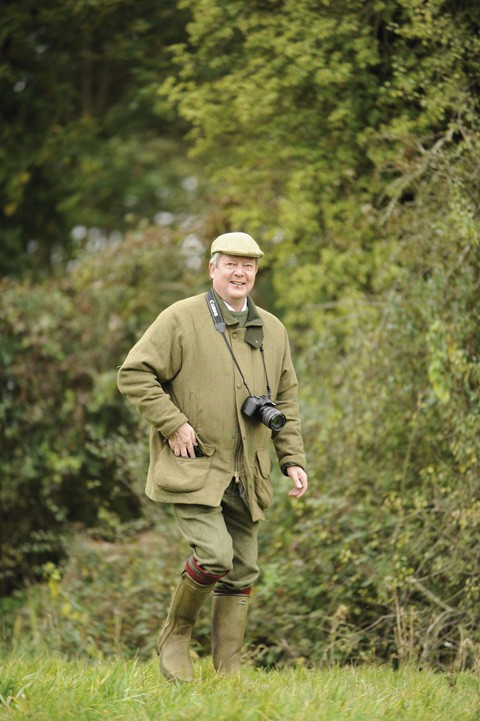
While Roy took guns to their pegs and Robert’s voice crackled instructions over the radio, Philip prepared to photograph the drives from his game shooting stick.
Graham’s Maize turned out to be one of the most fruitful drives of the day, most of the flushes of 25 plus pheasants heading straight forward, the gun on peg four hardly knowing where to look, let alone when to re-load.
Many felled birds were destined for the wood or the three-foot ditch cut out in front of it, so a forensic search of the ground was undertaken after the whistle had gone.
On our way back to the lorry Philip drew towards me and quietly mentioned that the number of shots fired, 273, was a record for any drive on any of his shoots.
While he must have been pleased I wondered, given the number of birds being taken back to the cart, if we’d move down a few gears before lunch.
We took elevenses – sloegasms and sausage rolls – outside the remnants of an old barn on the edge of the steadier paced second drive, Lime Kiln, where pigeon raced partridge out of a flooded quarry bordered by sycamores, parsnips and sugar beet.
Football Field shares its borders with Graham’s Maize. The overgrown pitch is still noticeable even 200 yards back, and although the goalposts and corner flags have gone a small wooden changing room still stands opposite a large area of maize.
Guns were knee deep in turnip leaves and one picker-up even uprooted one to share with his dog.This drive also features another relic of the shoot’s past, King Edward’s Ride – the avenue of trees leading towards Quidenham Hall, which is now a monastery.
The drive was was short and fun. Before the first bird had been seen a muntjac bounded through the turnips and towards the sanctity of the wood 500 metres behind the line.
The wind was in the guns’ faces now, and the birds were fast and high, a challenging prospect.
It was also proof, in Philip’s eyes at least, that the best birds in England aren’t the preserve of any one county, triumphantly exclaiming “and they say Milburn’s lost his touch!”
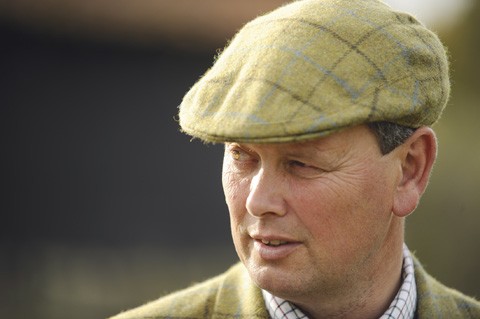
Further evidence was presented to the guns on Beet Pad, the last drive before lunch. Here, guns stood on the edge of a rape field and watched in some bewilderment as pheasants, pushed through the short pine wood in the distance, were sporting – 30 yards up at least – before they had even cleared the block of maize.
“They can get up to a good height so you can be selective with these birds and it shows Norfolk can produce this kind of sport,” Roy said, as the two guns in front of him stretched to the point of snapping.
The final two drives, Fen Maize and Narrow Belt, have the A11 at the boundary edge. Both are ploughed fields bordered by high tree lines where guns lined out with the wind and sun in their face.
The team almost had to tip-toe to their pegs on Narrow Belt, since human movement is like adding mortar fire to the disruption caused by vehicles that use the public road running alongside it.
There were few shots on Fen Maize and, though the numbers on Narrow Belt were small, each gun saw birds over them – one gun even shooting dead six birds with his first six shots.
A fitting finale to a day of fine sport in one of the most traditional of game shooting counties in the UK. It is easy to see why King Edward VII was so fond of the place.
Philip Milburn on managing game shooting days
“The shooting season is an incredibly busy time for me but I’m supported by a great group of friends that help me host days throughout the season. We sometimes have four full driven days on one day so they are invaluable. I also have some fantastic support staff and my wife who between them organise all the logistics around getting the right gun to the right shoot, making sure all the catering is in hand etc. People are very different so it’s a case of establishing early on in the day what that particular group of guns want and then delivering it. It’s no good doing the same thing for every group. You have to listen to what they are after for their day, communicate that to the staff and do your best to deliver.”
Philip Milburn on starting up Milburn Game & Shooting
“I didn’t really have a clear vision of what I wanted to build. I’ve been interested in game shooting since I was a young lad when my cousin and I spent days game shooting for fun in Northumberland. However, my business interests were very demanding, and for 25 years I worked nearly every day so only managed to fit in a few days game shooting a year.
“Not long after I retired the opportunity arose for me to acquire the shooting rights over the Great Hockham estate. Before I knew it this had been joined by the Quidenham & Hargham estates, Narford Hall and the former Banham Shoot Ground. It’s good to have challenges to overcome in something totally different from the business I was in before.
“I’m lucky I’ve had some great keepers to guide me. They are all totally committed to the job in hand and accept they have to be good all-rounders: good at predator control; organising the beating lines; knowing what the guns need and being aware of safety. I was able to bring years of business experience and a fresh pair of eyes to help build a viable and sustainable operation.”
The vittles
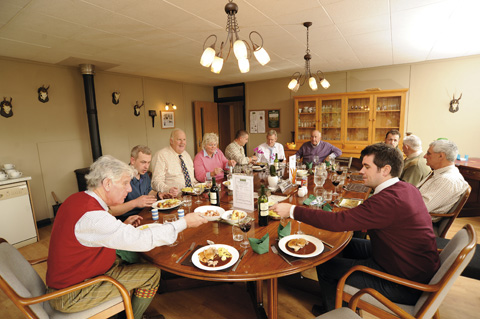
Catering is an important part of the shoot day experience for Philip Milburn. Guns are encouraged to take more than one bacon roll on arrival, and the same goes for the mustard coated sausage rolls and glasses of champagne offered around at elevenses. A traditional two-course lunch is served in the shoot lodge and all food is either grown locally or taken from the shoot. Philip hardly sits down while his guests are eating, either topping up drinks or fetching sauces for people who are a little short. Even after the remains of the pudding are taken away there is no urgency placed upon the guns to put cutlery together and get back outside for the afternoon session. Philip is passionate about promoting game meat as a source of food, and even if it isn’t served at lunch, guns are invited to take a brace home at the end of the day.
For more information about game shooting at Quidenham & Hargham, or any other shoot under the management of Milburn Game & Shooting, contact Philip Milburn on 07802 546175, email philip.milburn@btconnect.com or visit www.norfolkshoots.co.uk
For more shoot features click here
Related Articles
Get the latest news delivered direct to your door
Subscribe to Shooting Times & Country
Discover the ultimate companion for field sports enthusiasts with Shooting Times & Country Magazine, the UK’s leading weekly publication that has been at the forefront of shooting culture since 1882. Subscribers gain access to expert tips, comprehensive gear reviews, seasonal advice and a vibrant community of like-minded shooters.
Save on shop price when you subscribe with weekly issues featuring in-depth articles on gundog training, exclusive member offers and access to the digital back issue library. A Shooting Times & Country subscription is more than a magazine, don’t just read about the countryside; immerse yourself in its most authoritative and engaging publication.






